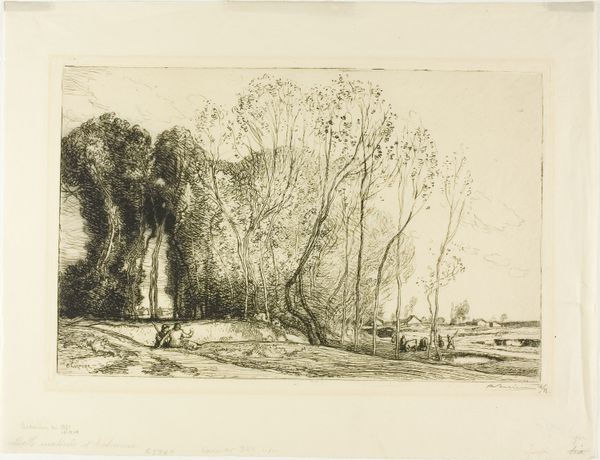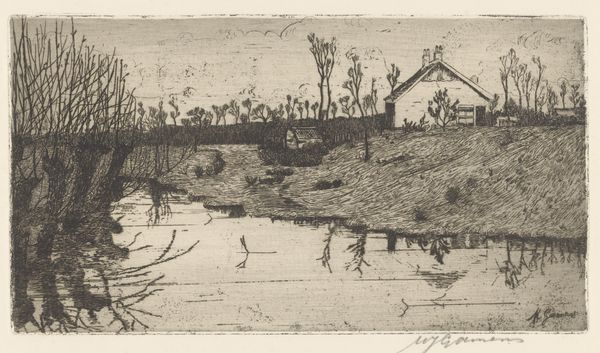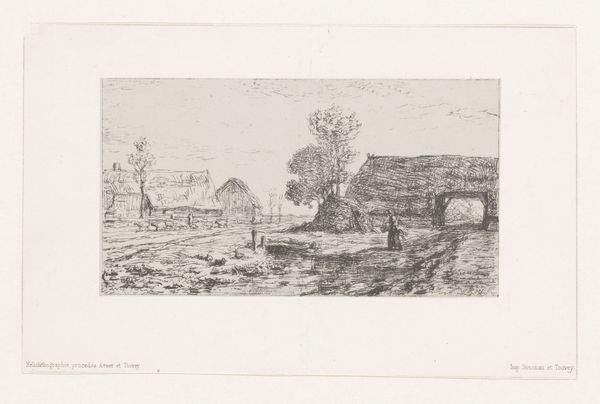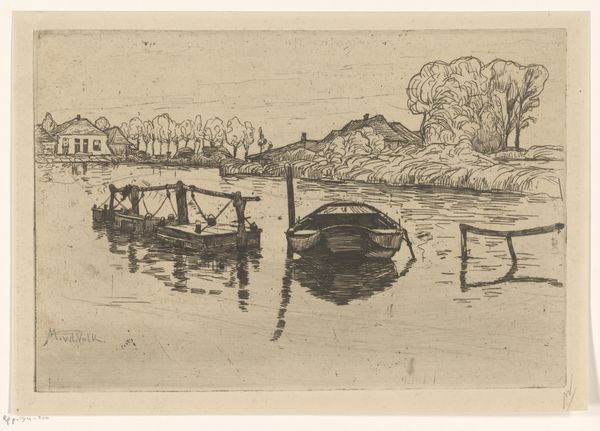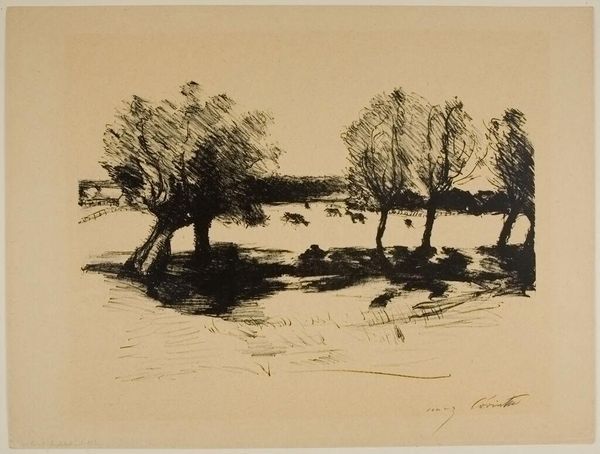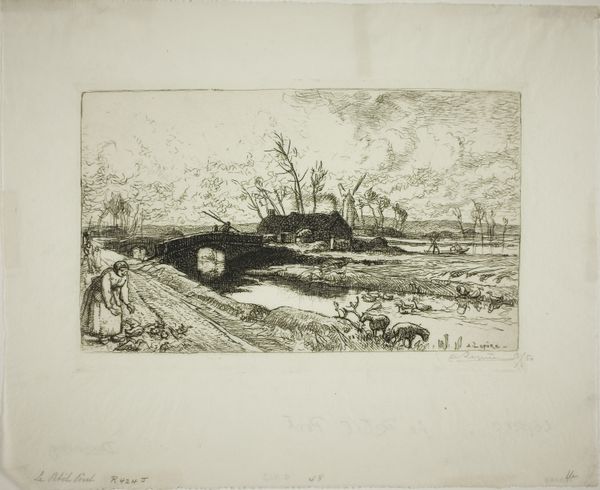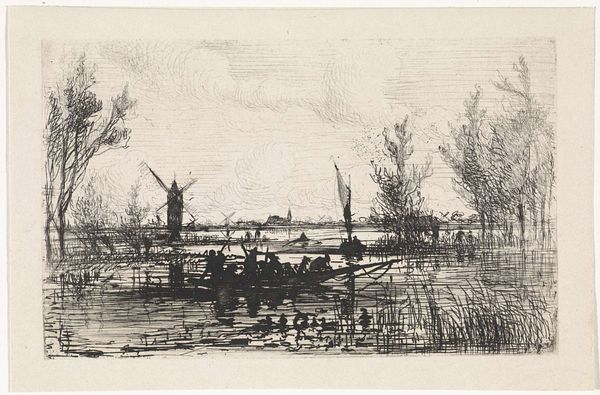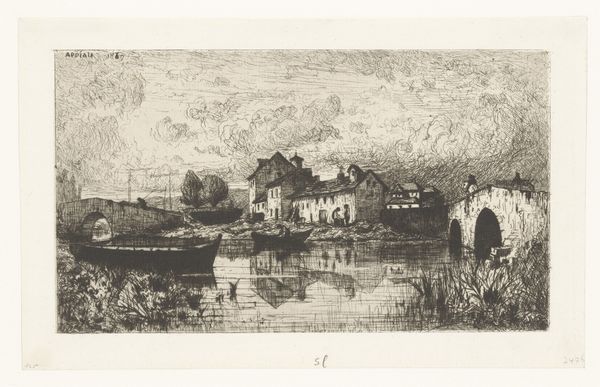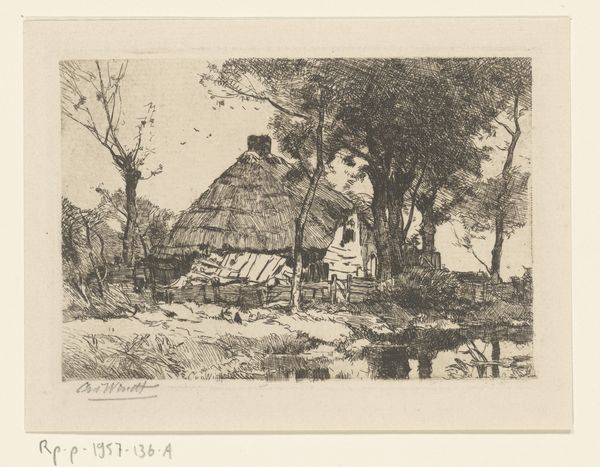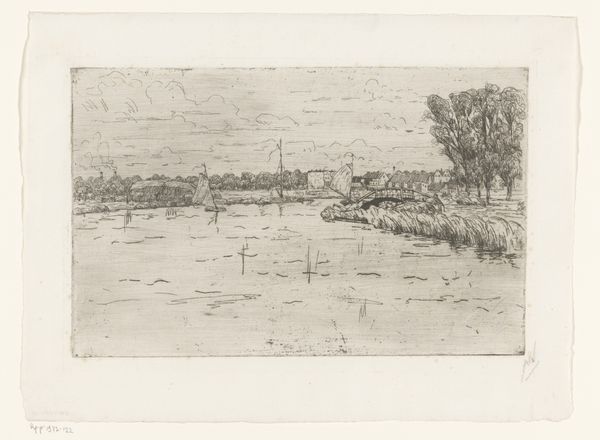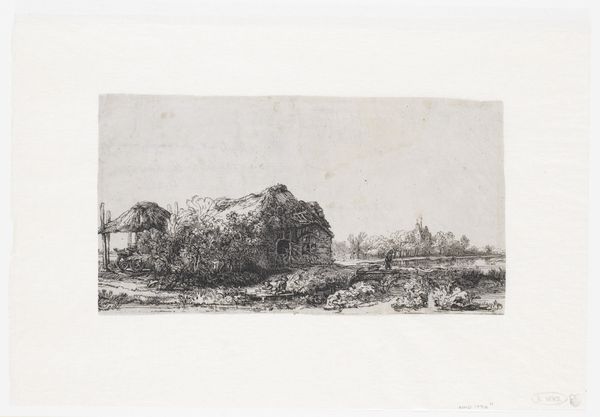
Dimensions: 165 × 294 mm (image); 174 × 299 mm (plate); 230 × 361 mm (sheet)
Copyright: Public Domain
Curator: Looking at "The Flooded Hovel," created around 1910 by Auguste-Louis Lepère, I am immediately struck by how closely Lepère captured the essence of a precarious existence, especially considering how etching lends itself to linear precision. Editor: My initial feeling is one of quiet resignation. The light is soft, almost muted, and the linework, though detailed, evokes a sense of fragility, doesn't it? Like everything could be washed away. Curator: Yes, and that's interesting considering the socio-political implications. Lepère, active during a period of significant social upheaval, particularly with rural displacement due to industrialization, chooses to represent this inundation—literal and metaphorical—through his detailed representation of labouring class existence. Editor: I see the weight of history pressing down. Water often serves as a symbol of purification and transition, but here, the overflowing river feels more like an oppressive force, disrupting lives. Did water have significance to the labouring class in particular during the Industrial era? Curator: Absolutely. Access to clean water was and is a crucial issue for disenfranchised communities, directly influencing labor output and quality of life, in an age with poor city infrastructures. The etching process—acid biting into metal—mirroring societal decay in response to such rapid progress. Editor: And isn’t it interesting how the artist directs us to look through these lines to discern faces of despair, with body language giving a clear indication of sorrow; especially when you can also view the people as also symbols. This resonates universally—across cultures and generations. Curator: The choice of medium supports this theme of dispossession, I think. A print, by nature, is reproducible and distributable, democratizing an image of inequality and potentially sparking dialogue about displacement and power dynamics. Editor: Exactly. As viewers, we’re prompted to consider what 'home' and 'stability' represent, and the resilience needed to navigate societal shifts. Curator: It is, as you point out, not only a poignant artistic expression but a timeless visual narrative of vulnerability and hope, rendered in monochrome. Editor: Agreed. "The Flooded Hovel," indeed, remains a thought-provoking piece; a silent yet compelling testament.
Comments
No comments
Be the first to comment and join the conversation on the ultimate creative platform.
